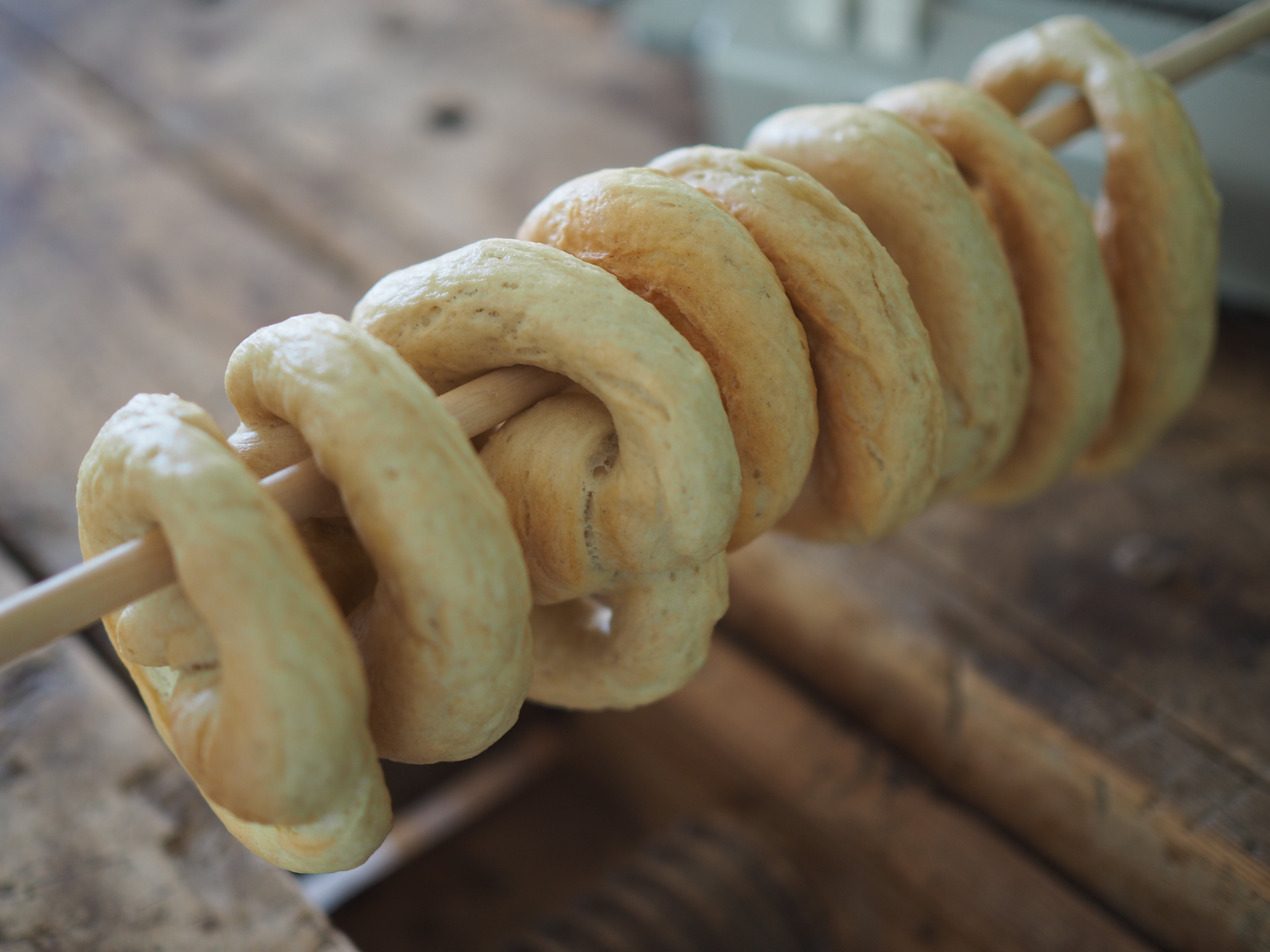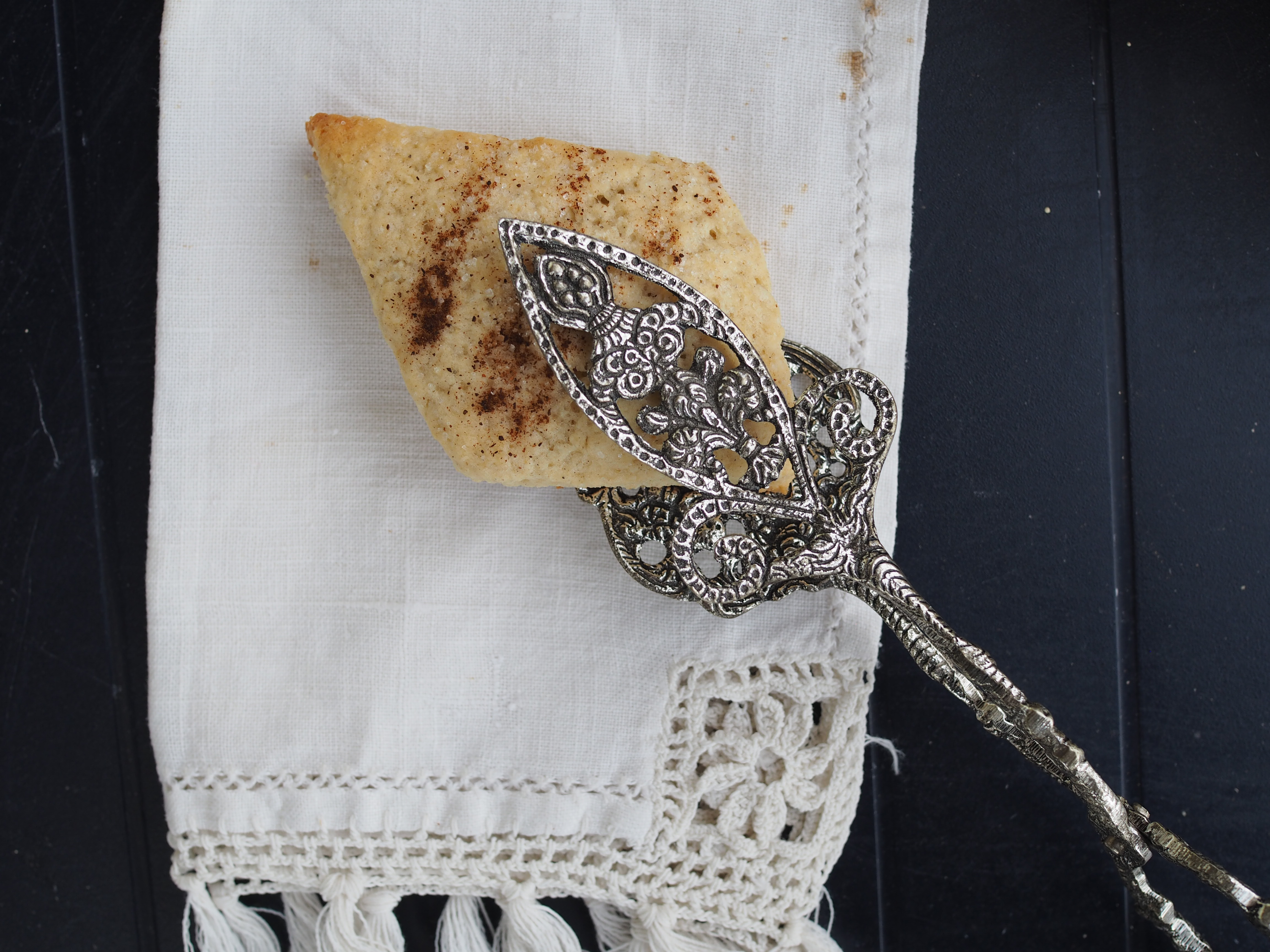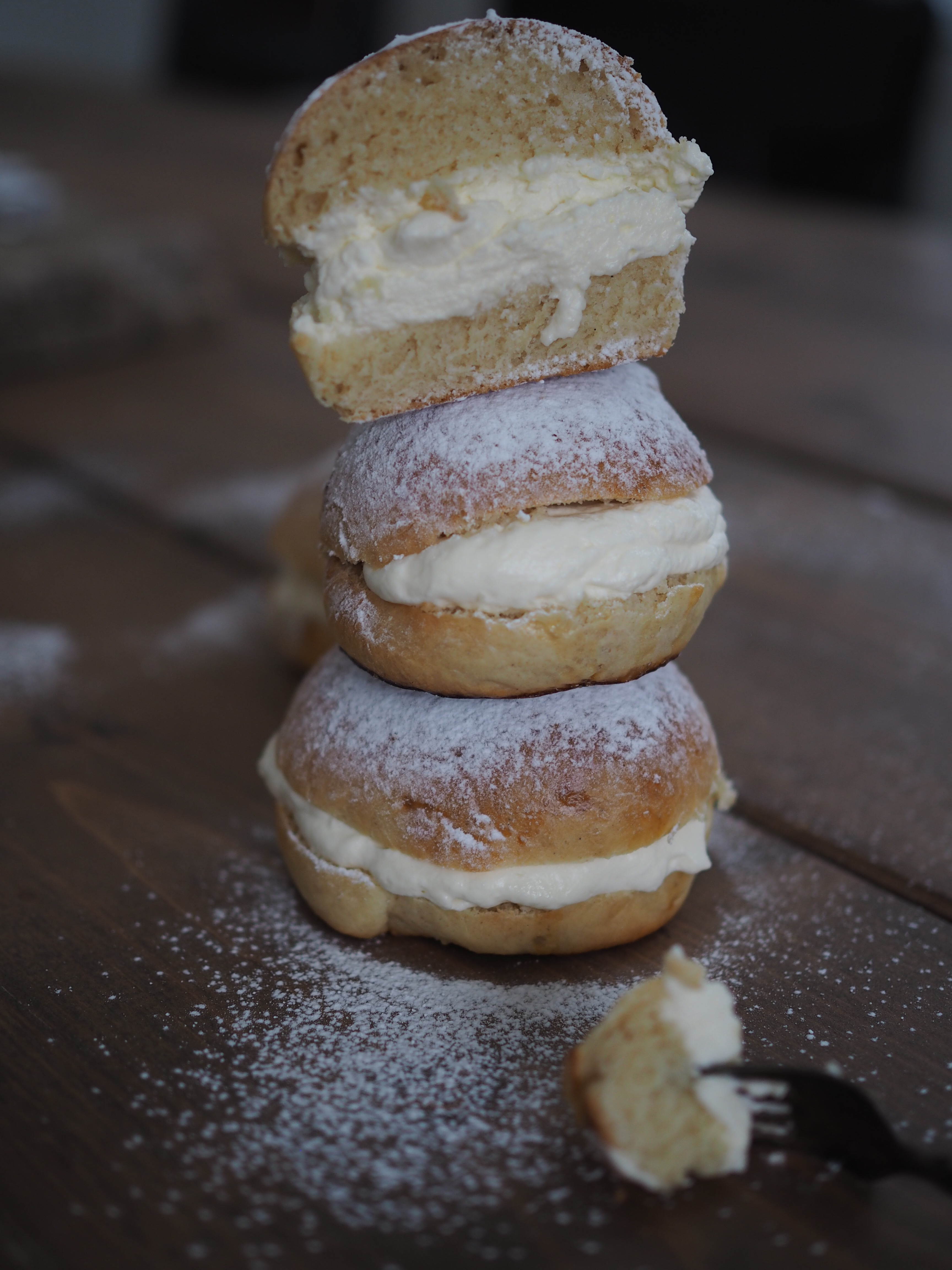
 Kringler. Nordic pretzels of various forms of sweet, salty, filled, crispy and soft. But one kringle stands out as one of the most well-known in Norway and it hails from Bergen. It also happens to be a permanent fixture on the 17 Mai (Grunnlovsdag) table, as it finds its place alongside spekemat (cured meats) and rømmegrøt.
Kringler. Nordic pretzels of various forms of sweet, salty, filled, crispy and soft. But one kringle stands out as one of the most well-known in Norway and it hails from Bergen. It also happens to be a permanent fixture on the 17 Mai (Grunnlovsdag) table, as it finds its place alongside spekemat (cured meats) and rømmegrøt.
Bergen is known in Norway for their vannkringler, a traditional pastry still consumed today. The recipe is simple: flour, water, yeast and salt. The technique is masterful, as the dough is rolled out thinly and then tossed and twisted around before being sealed with a gentle blow. Before being baked until a golden brown, they are placed in a hot water bath, hence bestowing them the name vannkringler, or ‘water ring’.
This tradition is thought to be influenced heavily by Dutch and German salesman operating in the area of Bryggen, the old trading wharf of Bergen. Being easy to store and with a long shelf-life, vannkringler was purchased by many fisherman, who would take them along their journeys. It is said that empty caskets would be used as storage for the vannkringler by northern Norwegian fisherman as they headed back home. (more…)



 Lifting the weight and removing the board revealed a two-day culinary journey. Nothing difficult, nothing too time consuming. An act of osmosis. Curing. Transformation. And as the sharpened knife slowly pierced into the orange-pink, dill-infused delicacy, the thrill of knowing the next time step would be getting a taste reached across to everyone in the kitchen. A smooth, grainy and subtly sweet mustard sauce and a warm, hearty bowl of creamy potatoes dancing with dill to round it all off. Luxury at its finest and also its simplest.
Lifting the weight and removing the board revealed a two-day culinary journey. Nothing difficult, nothing too time consuming. An act of osmosis. Curing. Transformation. And as the sharpened knife slowly pierced into the orange-pink, dill-infused delicacy, the thrill of knowing the next time step would be getting a taste reached across to everyone in the kitchen. A smooth, grainy and subtly sweet mustard sauce and a warm, hearty bowl of creamy potatoes dancing with dill to round it all off. Luxury at its finest and also its simplest.


 My sister recently collated and copied my Great Grandmother’s recipes as gifts for the whole family. Reading through the recipes brought back so many wonderful memories. Her cookies were always a highlight of our holiday traditions. Cookies that, today, seem classical and perhaps a bit vintage. Something our grandmother grew up with and baked for us in our childhood, but we rarely, if ever, bake in our own kitchens.
My sister recently collated and copied my Great Grandmother’s recipes as gifts for the whole family. Reading through the recipes brought back so many wonderful memories. Her cookies were always a highlight of our holiday traditions. Cookies that, today, seem classical and perhaps a bit vintage. Something our grandmother grew up with and baked for us in our childhood, but we rarely, if ever, bake in our own kitchens.


 As the sun rises, I find myself in the room I grew up in. The interior may have changed over the years I have been gone, but the memories have been imprinted across the walls, something that new paint cannot erase.
As the sun rises, I find myself in the room I grew up in. The interior may have changed over the years I have been gone, but the memories have been imprinted across the walls, something that new paint cannot erase.
 Serving lamb, for instance, is not an old tradition. For the long, dark Norwegian winters delay the gestation period for sheep, meaning lambs are not large enough to be ready by Easter. The lamb is either imported or from last year’s yield. Nonetheless, lamb is important to the table today. Often served on the bone, it is roasted with simple herbs and seasonings.
Serving lamb, for instance, is not an old tradition. For the long, dark Norwegian winters delay the gestation period for sheep, meaning lambs are not large enough to be ready by Easter. The lamb is either imported or from last year’s yield. Nonetheless, lamb is important to the table today. Often served on the bone, it is roasted with simple herbs and seasonings.

 The concept of awakening later turned into an old tradition of waking early from bed and grabbing birch branches to then playfully spank those who were not yet awake. It was normal, up until far into the late 1900s, for children to whip their parents for fun and to be treated to a cream-filled bun afterwards. These buns are still eaten on Sunday.
The concept of awakening later turned into an old tradition of waking early from bed and grabbing birch branches to then playfully spank those who were not yet awake. It was normal, up until far into the late 1900s, for children to whip their parents for fun and to be treated to a cream-filled bun afterwards. These buns are still eaten on Sunday.
